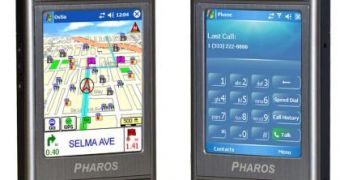The availability of Global Positioning System capabilities in mobile phones is on the rise, the latest reports in the area show, and the same applies to the sales of devices to include the feature. According to a recent report from Berg Insight, the shipments of GPS-enabled GSM/WCDMA handsets went up by an impressive 92 percent in 2009 all around the world, showing the high appeal these devices enjoy.
According to the report, the shipments of GPS-enabled mobile phones reached 150 million units during 2009, marking a compound annual growth rate (CAGR) of 38.7 percent, and are expected to top 770 million units in 2014. Moreover, the report also shows that the adoption of GPS technology in mobile phones started with the smartphone segment, and that now the feature is seen as one of the standard functionalities today's devices should include.
Berg Insight further notes that the adoption of GPS technology is expected to reach the low end smartphone segment too. Not to mention that the feature is also forecast to soon become a standard in mid-range feature phone models set to become available on the market starting with the ongoing year. During 2011, users should expect for the location performance of mobile phones to increase significantly as well, the company notes.
“Chipset developers and handset vendors are already working on next-generation location technologies that will address the limitations of GPS when using handsets in urban canyons and indoors”, said André Malm, senior analyst, Berg Insight. “Multi-mode receivers that also support the Russian GLONASS satellite system will appear in handsets in 2011. By combining the two systems, more visible satellites will increase the chance to receive sufficiently strong signals to get a fix in more locations”.
André Malm states that the receivers compatible with GPS, GLONASS, and later Galileo, won't manage to prove reliable when it comes to indoors positioning. Other technologies are expected to be deployed in the future, which will “fuse signal measurements from multiple satellite systems, cellular networks and Wi-Fi,” along with data from various sensors, including accelerometers, gyroscopes and altimeters.

 14 DAY TRIAL //
14 DAY TRIAL //